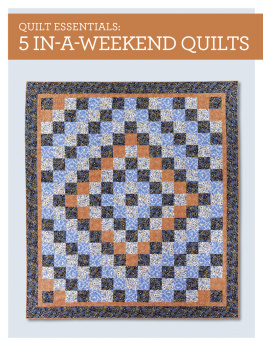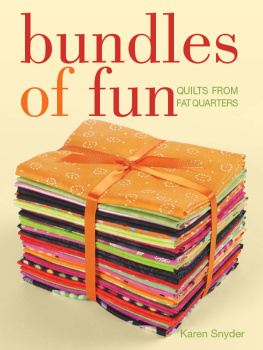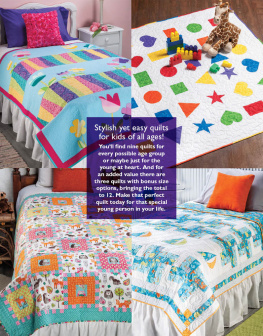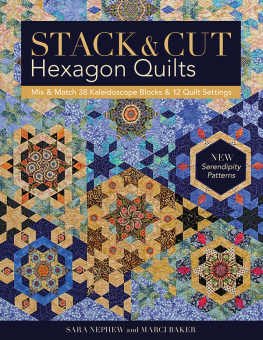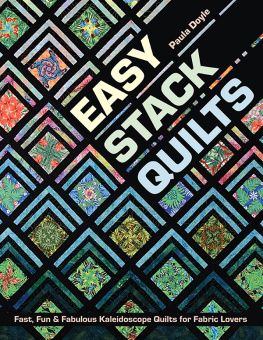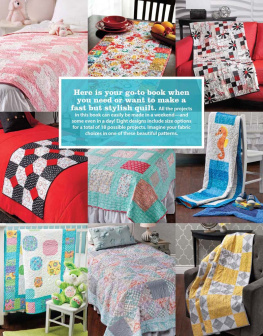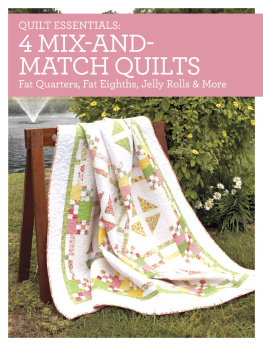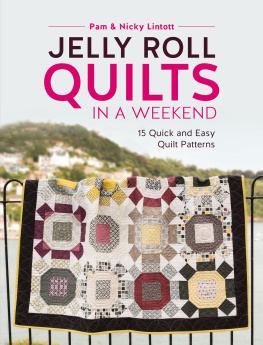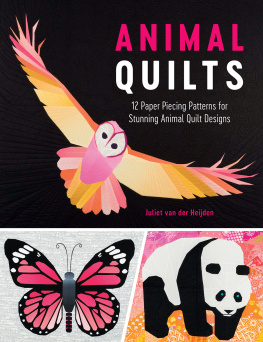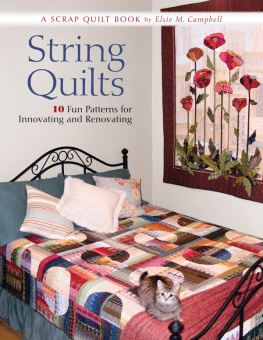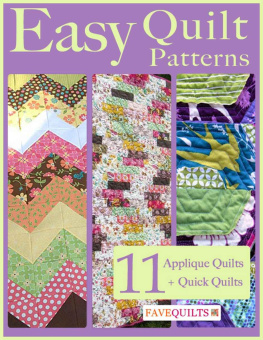Thank you for purchasing this Martha Pullen eBook.
Sign up for our newsletter and receive special offers, access to free content, and information on the latest new releases and must-have crafting resources! Plus, receive a coupon code to use on your first purchase from Store.MarthaPullen.com for signing up.
or visit us online to sign up at
http://marthapullen.com/ebook-promo
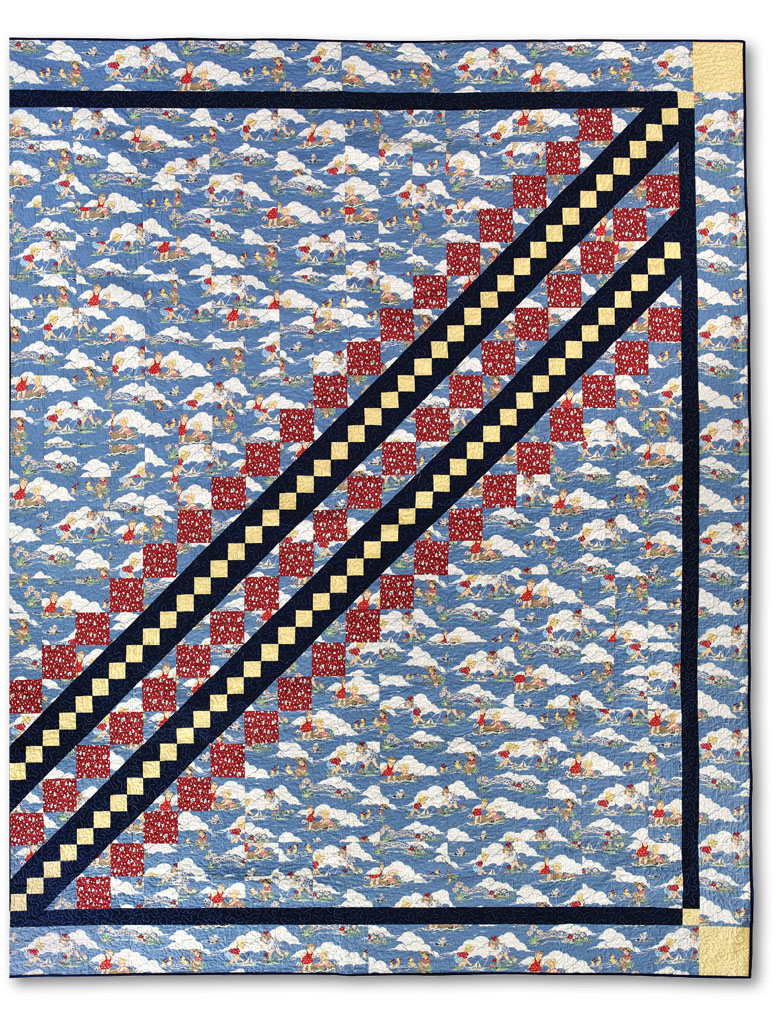
Contents
The Quilts
Large Queen Quilt
Large Queen Quilt
Double Quilt
Twin Quilt
Double Quilt
Introduction
How many times have you been browsing through the quilt shop and been enchanted by a big, beautiful print. You look at that fabric for the longest time, falling more and more in love with it, but then you walk away. You ask yourself, How would I ever be able to use something with that large scale in a quilt?
This pamphlet is the answer. There are lots of ways to use those big printsand not just for borders or backs. Here youll find ideas for cutting them up into small pieces, leaving them as big pieces and working them into many different, beautiful quilts.
Besides the large floral prints, Asian prints, paisleys and toiles, theres another whole categorynovelty prints. These are plentiful in the marketplace. Some are whimsical, almost cartoonish. Others are thematic, cowboys or hot rods for instance. There are also lots of novelty prints perfect for childrens quilts, like robots, paper dolls and fairy tale characters. These, too, can present a challenge for the quilteruntil now. Turn the pages of this book and imagine your favorite giant poppy print or puppy dog fabric in one of these quilts. Hopefully you wont walk away from big prints next time one catches your fancy.
Working With Big Prints
Not all big prints are created equal. Designs may be directional or tossed, tightly packed or separated by lots of background. Each of these qualities needs to be considered when choosing a fabric and pattern. Each can present its own set of challenges, but none should be overlooked. Just be aware of the unique properties of each print and work with them rather than fight them.
When looking at the patterns, dont limit yourself to using fabrics that look just like the photo. Fabrics come and go quickly in todays market and chances are you wont find the exact fabrics featured. You may want to find something similar, but keep an open mind when looking at patterns. You may want to substitute a toile for a floral print. A quilt with a novelty print may be perfect for that Asian-inspired piece youve been saving.
Often when working with big prints you may need extra fabric so you can do some fussy cutting. Fussy cutting is nothing more than centering an element of the design in the patches or strips you are cutting. To some it may seem wasteful to fussy cut as you often have odd pieces of fabric left oversave them for another project. Theres really no such thing as wasted fabric to the true quilter.
Novelty Prints
Novelty prints have been around for centuries and come in many scales. It wasnt uncommon to see small dogs or horseshoes on shirting prints from the late 1800s or toys and children in a small scale on prints from the 1920s and 30s. In recent years, however, novelty prints have exploded, both in the size of the prints and the number of offerings from which to choose. You can find novelty prints that reflect your favorite movie and cartoon characters, hobbies such as bull riding or fishing, trendy themes like fashion or tattoos, favorite foods and even pin-up guys and gals. These novelty prints make up into wonderful gift quilts that reflect the recipients taste.
Opportunity Cloth
While not as plentiful as novelty prints, there are often opportunity fabrics available. These are sometimes referred to as cheater cloth.
The designs may look like a patchwork or appliqu quilt but are printed on the fabric. They are usually meant to be used just as they are, without being cut. However, when you come across prints of this type, consider how they might look if cut up and used in another way.
Scattered Prints
Some big prints are scattered across the fabric with a lot of background showing. This is not a bad thing, but should be considered when choosing which quilts to make from them. Generally it is better to choose a quilt pattern that doesnt require cutting the big-print fabric into lots of small pieces. If there is strong contrast between the design and the background color, the edges of your piecing may become lost. Fussy cutting or using large pieces of a scattered design will result in a more successful quilt.
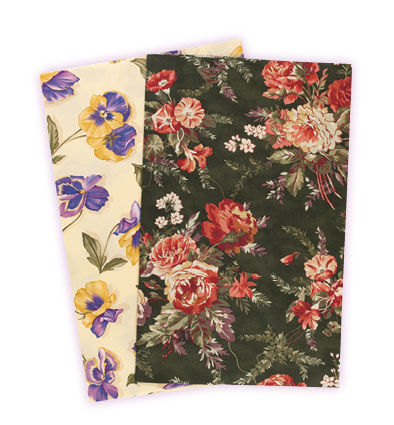
Scattered prints often have a lot of background showing.
Packed Prints
Packed designs are just thatprints that have the pattern packed closely together without a lot of background showing. Even though they are large scale, prints of this type lend themselves well to cutting into smaller pieces and dont need to be fussy-cut.

Packed prints have the elements of the print packed closely together.
Directional Prints
Directional prints can be handled two ways. You can ignore the directionality of the print and let pieces lie in every direction in the quilt. The results can be lovely. If you decide to do this, youll want to take a few minutes when laying out the blocks to be sure that the design does, indeed, go in all directions. If 80% of the design is going in the same direction, the 20% that is different looks out of place. However, if the directional print is turned equally throughout the quilt, the pattern will look balanced.
You may prefer to keep the integrity of the design intact by making sure the direction of the print is the same throughout the quilt. Planning must start before cutting the fabric for the desired effect to be achieved. You will also want to be sure that you have enough fabric, especially if you are using it in the borders. Two of the borders will need to be cut lengthwise and two will need to be cut crosswise.
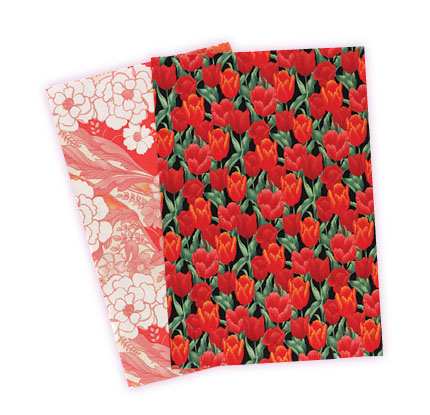
Directional prints may take extra planning before cutting.
General Instructions
Four Keys to Success
There are four basic things that you need to master to become a successful quilter:
- Accurate cutting
- A " (6mm) seam allowance
- Good pressing techniques
- Measuring through the middle when adding your borders
Of course, you still need to quilt and bind your project, but if you pay attention to these four principles, your seams will match and your quilt top will lay flat.
Cutting
Accurate cutting is the first step in making quilts that go together easily and lay flat. Proper tools make cutting easy. Be sure that your rotary cutter has a sharp blade with no nicks, that you have a ruler that is at least 24" (61cm) long and that your mat is free of grooves.

